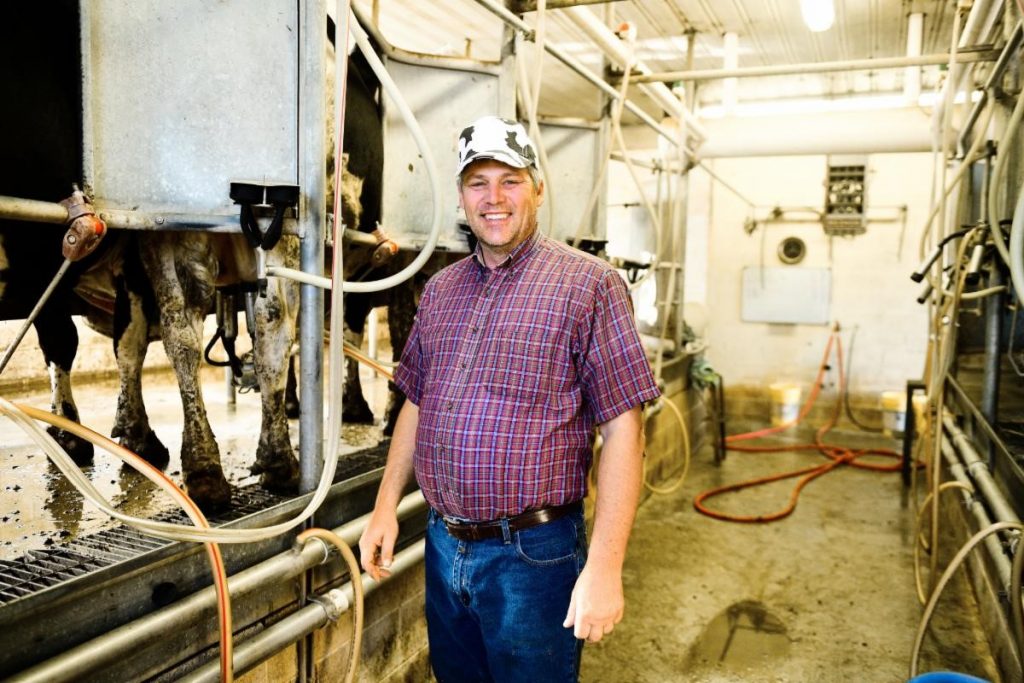Yesterday, the USDA announced details of the direct payments to producers, including dairy farmers, under the Coronavirus Food Assistance Program (CFAP). CFAP is meant to provide up to $16 billion in direct payments to farmers and ranchers impacted by the coronavirus pandemic and $3 billion for USDA’s Farmers to Families Food Box program. Nothing new related to the Food Box program was announced yesterday. The $16 billion pot of direct payments will be drawn from the CARES Act ($9.5 billion) and the Commodity Credit Corporation ($6.5 billion).
USDA confirmed that beginning May 26, the USDA’s Farm Service Agency (FSA) will start accepting applications from dairy farmers who have suffered losses of five-percent-or-greater price declines due to COVID-19 and face additional significant marketing costs as a result of lower demand, surplus production, and disruptions to shipping patterns and the orderly marketing of commodities. USDA has posted details of the program on www.farmers.gov/cfap, along with a link to the final rule and the cost-benefit analysis of the program.
USDA has confirmed that producers will receive 80 percent of their maximum total payment upon approval of the application. The remaining portion of the payment, not to exceed the payment limit, will be paid at a later date if funds remain available.
Therefore, it is very important that dairy producers submit their applications as soon as possible, as time is of the essence when it comes to the amount of money that remains available for CFAP.
IDFA has provided additional topline details relevant to the dairy industry below:
Payment Calculations
CFAP payments are eligible to all dairy operations with milk production in January, February, and/or March 2020. Any dumped milk production during the months of January, February, and March 2020 is eligible for assistance.
For dairy, a single payment will be made based on a producer’s certification of milk production for the first quarter of calendar year 2020 multiplied by $4.71 per hundred weight (the national price decline during the same quarter). The second part of the payment is based a national adjustment of 1.4% (spring flush in milk production) to each producer’s production in the first quarter, multiplied by $1.47 per hundred weight.
After speaking with USDA, IDFA can confirm that CFAP payments to dairy producers will not cover long-term supply contracts / monthly forward contracting. (Please note: This has since been clarified with USDA, and long-term/forward contracting has no impact on calculating your dairy payment.)
Payment Eligibility and Limits
Eligible producers are a person or legal entity of specified agricultural commodities (in this case, milk) who have suffered a five percent-or-greater price decline as a result of the COVID-19 pandemic, and who face substantial marketing costs for inventories.
To be eligible for payments, a person or legal entity must have an average adjusted gross income of less than $900,000 for tax years 2016, 2017, and 2018. However, if 75 percent of their adjusted gross income comes from farming, ranching, or forestry, the AGI limit of $900,000 does not apply.
It is possible for more than one person or legal entity from a single operation to be eligible for payments under CFAP. However, CFAP payments are subject to a per person and legal entity payment limitation of $250,000. This limitation applies to the total amount of CFAP payments made with respect to all eligible commodities. In other words, under special rules of CFAP, a producer/person may be eligible for the maximum payment of $250,000 for dairy as well as the maximum payment of $250,000 for corn and the maximum payment of $250,000 or soybeans, up to $750,000 based upon the number of shareholders. Rules are different for corporate entities, however.
Unlike other FSA programs, special payment limitation rules will be applied to participants that are corporations, limited liability companies, and limited partnerships (corporate entities). These corporate entities may receive up to $750,000 based upon the number of shareholders (not to exceed three shareholders) who contribute at least 400 hours of active person management or personal active labor.
Persons and legal entities also must:
- Comply with the provisions of the “Highly Erodible Land and Wetland Conservation” regulations, often called the conservation compliance provisions;
- If a foreign person, provides land, capital, and a substantial amount of active personal labor to the farming operation; and
- Not have a controlled substance violation.
For a corporate entity:
- With one such shareholder the payment limit for the entity is $250,000;
- With two such shareholders, the payment limit for the entity is $500,000 if at least two members contribute substantial labor or management with respect to the operation of the corporate entity; and
- With three such shareholders, the limit is $750,000 if at least three members contribute substantial labor or management with respect to the operation of the corporate entity.
Visit www.farmers.gov/cfap to apply today.


